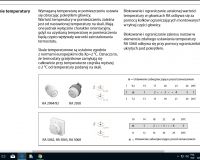Hi,
I live in a block built in the 90s. Two years ago, I replaced the cast iron radiators with Purmo plate radiators, additionally Danfoss valves and thermostatic heads are installed. I have a question about the principle of operation of the heads. Namely, does program 3 mean a specific temperature? I have the impression that this head works as an open closed principle, I set 3 and nothing heats up, and how 5 goes. I don't quite understand how it works and could there be a problem with the installation?
Thanks
I live in a block built in the 90s. Two years ago, I replaced the cast iron radiators with Purmo plate radiators, additionally Danfoss valves and thermostatic heads are installed. I have a question about the principle of operation of the heads. Namely, does program 3 mean a specific temperature? I have the impression that this head works as an open closed principle, I set 3 and nothing heats up, and how 5 goes. I don't quite understand how it works and could there be a problem with the installation?
Thanks



